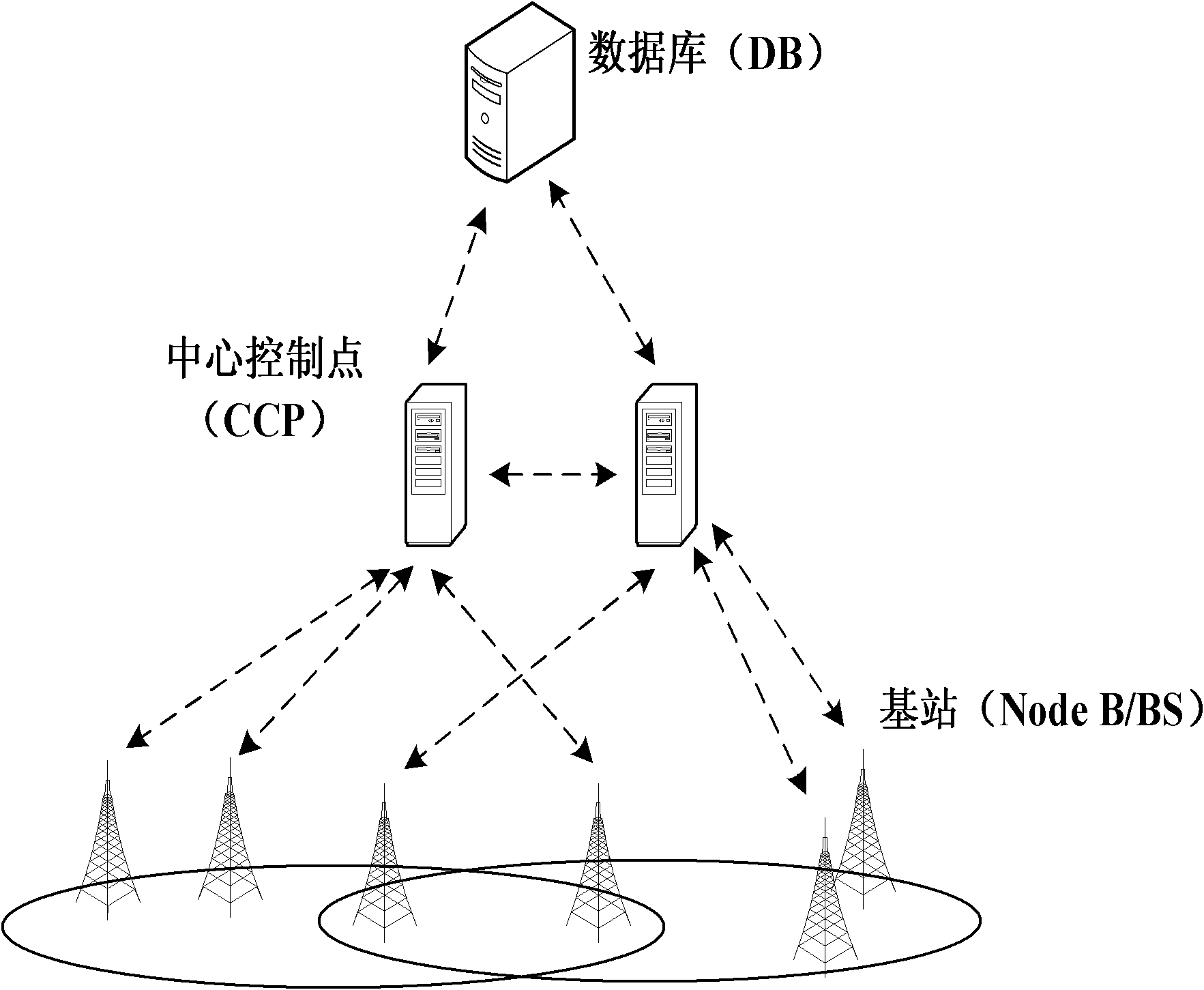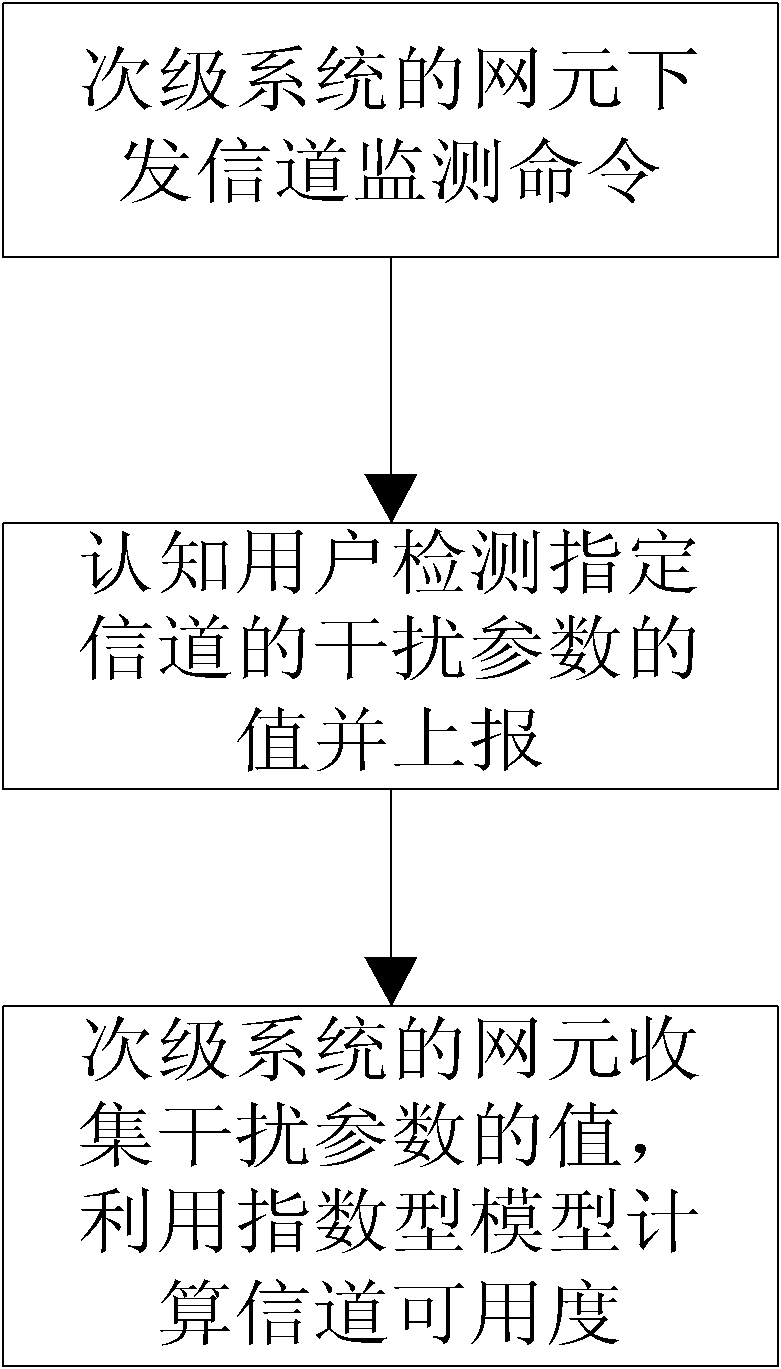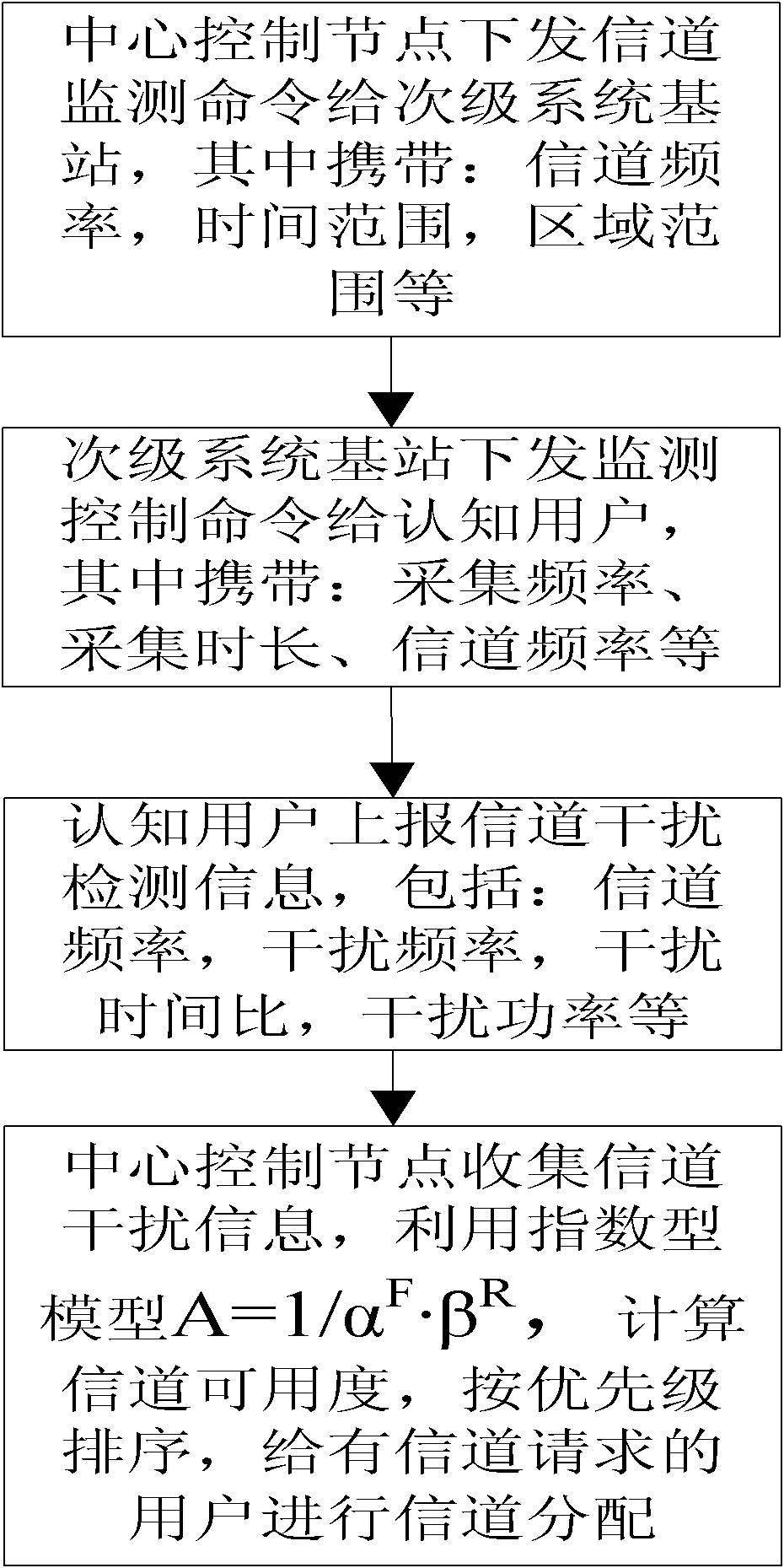Channel availability detection method and system, and spectrum management method
A channel monitoring and channel technology, which is applied in the detection of channel availability, spectrum management methods and system fields, can solve the problems of channel instability, user switching frequency, and slow update speed of channel priority table, etc., to achieve reasonable channel allocation and high performance Stabilize and reduce the effect of channel switching
- Summary
- Abstract
- Description
- Claims
- Application Information
AI Technical Summary
Problems solved by technology
Method used
Image
Examples
application example 1
[0074] In this example, the central control node collects interference signals and calculates channel availability, such as image 3 shown, including:
[0075] Step 1: The central control node sends a channel monitoring command to the base station of the secondary system. The channel monitoring command carries but is not limited to the following information: channel frequency, interference threshold, area range, time range, etc.;
[0076] Step 2: After receiving the channel monitoring command, the base station of the secondary system issues a control command to the cognitive users within the above-mentioned specified area, allowing them to monitor the interference situation of the channel. The control command includes: information collection frequency, collection duration, collection times and channel frequency, etc.;
[0077] Step 3: The cognitive user monitors the designated channel according to the control command, collects the interference result within a period of time, ...
application example 2
[0083] In this example, the value of the interference parameter is collected by the base station of the secondary system, and the channel availability is calculated, such as Figure 4 shown, including the following steps:
[0084] Step 1: The central control node issues a channel monitoring command to the base station of the secondary system to allow it to detect channel availability and the like. The monitoring command carries: channel frequency, interference threshold, etc.; of course, the interference threshold may not be carried in the monitoring command, but is set by the base station of the secondary system by itself;
[0085] Step 2: After receiving the channel monitoring command, the base station of the secondary system issues a control command to the cognitive user to monitor the channel interference. The control command includes: information collection frequency, collection duration, collection times, channel frequency, area range and time range, etc.
[0086] Step...
application example 3
[0094] In this example, the central control node collects interference signals and calculates channel availability, such as image 3 shown, including:
[0095] Steps 1 to 3 are the same as Steps 1 to 3 in Application Example 1, and will not be repeated here;
[0096] Step 4: After receiving the interference result, the base station of the secondary system reports to the central control node, and the central control node calculates the availability of the channel according to the interference result using an exponential model, and prioritizes the channel according to the value of the channel availability Sort. Among them, the exponential model is the following formula:
[0097] A=α F ×β R
[0098] Among them, A represents the channel availability; F represents the interference frequency; R represents the interference time ratio; α represents the interference frequency control factor, and β represents the interference time ratio control factor, and the values of α and β c...
PUM
 Login to View More
Login to View More Abstract
Description
Claims
Application Information
 Login to View More
Login to View More - R&D
- Intellectual Property
- Life Sciences
- Materials
- Tech Scout
- Unparalleled Data Quality
- Higher Quality Content
- 60% Fewer Hallucinations
Browse by: Latest US Patents, China's latest patents, Technical Efficacy Thesaurus, Application Domain, Technology Topic, Popular Technical Reports.
© 2025 PatSnap. All rights reserved.Legal|Privacy policy|Modern Slavery Act Transparency Statement|Sitemap|About US| Contact US: help@patsnap.com



